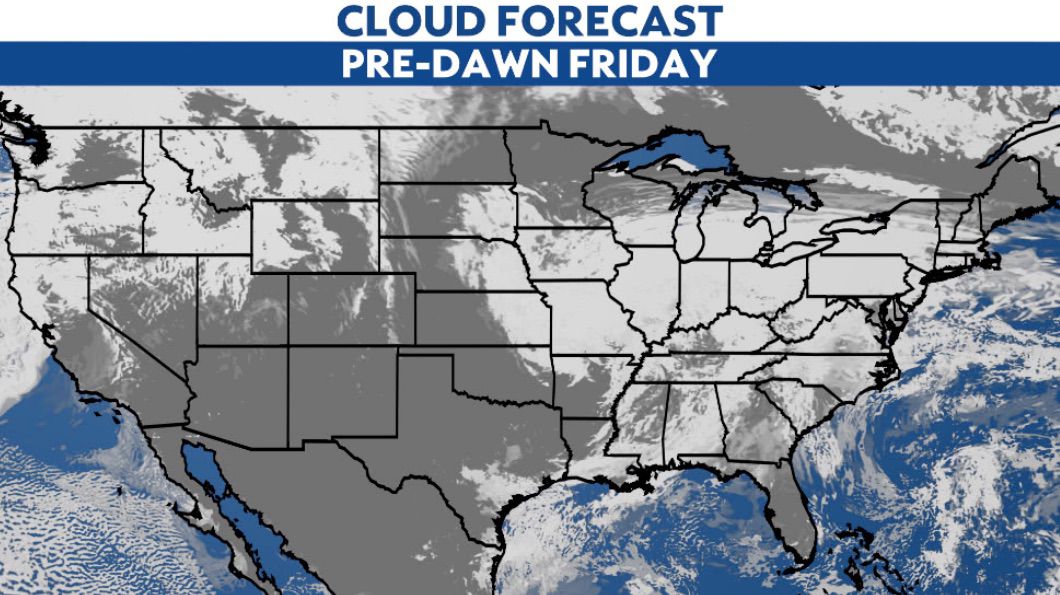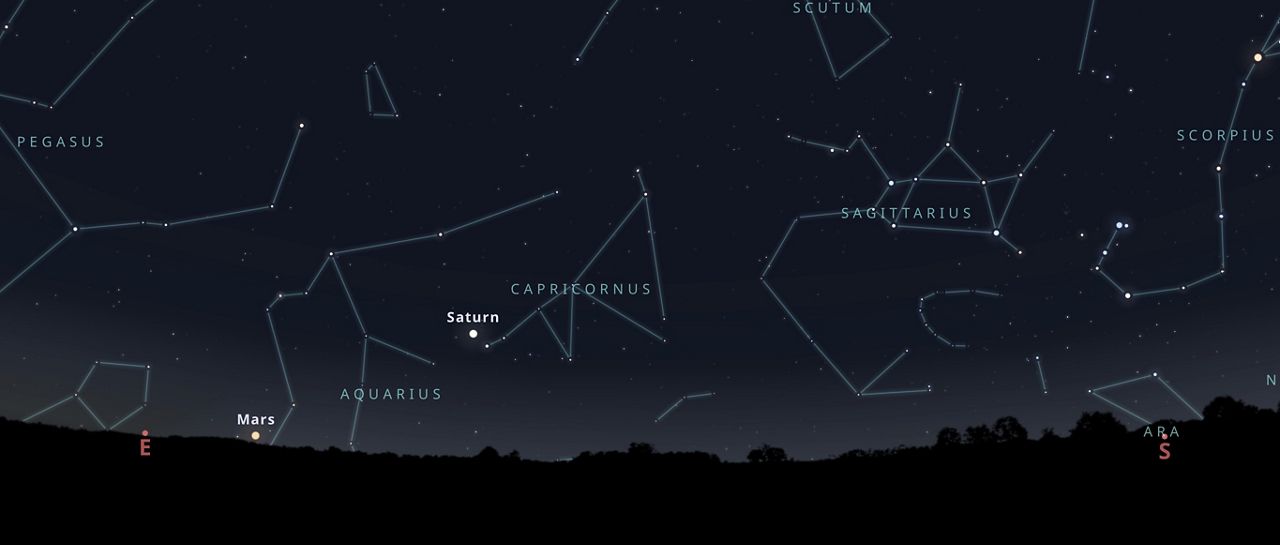The Eta Aquariid meteor shower isn’t as well-known as the Perseids or Leonids, but early risers may catch a few meteors in the sky the rest of this week.
This early May show is a minor event in our part of the world, providing up to 10 to 20 meteors per hour under ideal conditions. That means a dark sky and no moon.
The radiant point–where the meteors appear to originate–is in the upper part of the constellation Aquarius, which will rise in the southeastern sky very late in the night toward dawn.
However, you don’t have to look south to see “shooting stars,” since they can appear anywhere in the sky.
Position of stars and constellations in the southeastern sky pre-dawn Friday. (Stellarium)
The southern U.S. has a little better luck meteor spotting since the radiant gets higher in the sky compared to the northern U.S. during the meteor shower early Friday morning.
However, clouds will become a problem for a good share of the eastern half of the country.

The Southern Hemisphere actually gets the best show, seeing a few dozen meteors per hour, if not more.
This meteor shower comes as the Earth passes through the trail of debris from Halley’s Comet. We’ll pass through it again in late October during the more active Orionid meteor shower.
As for seeing Halley’s Comet again, we’ll have to wait awhile. The legendary comet will not pass Earth again until 2061.
But you don’t have to wait 39 years to check out some other cool sights in the sky. Take a look at this year’s celestial calendar to see when to look for other meteor showers and even a total lunar eclipse.

